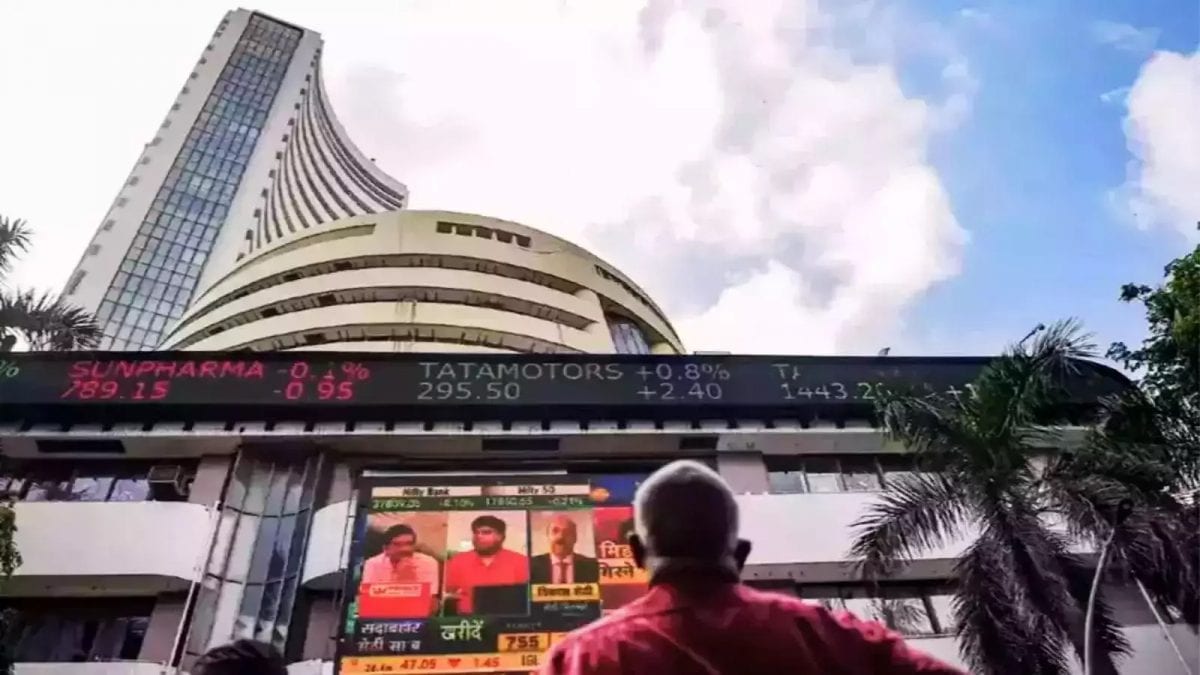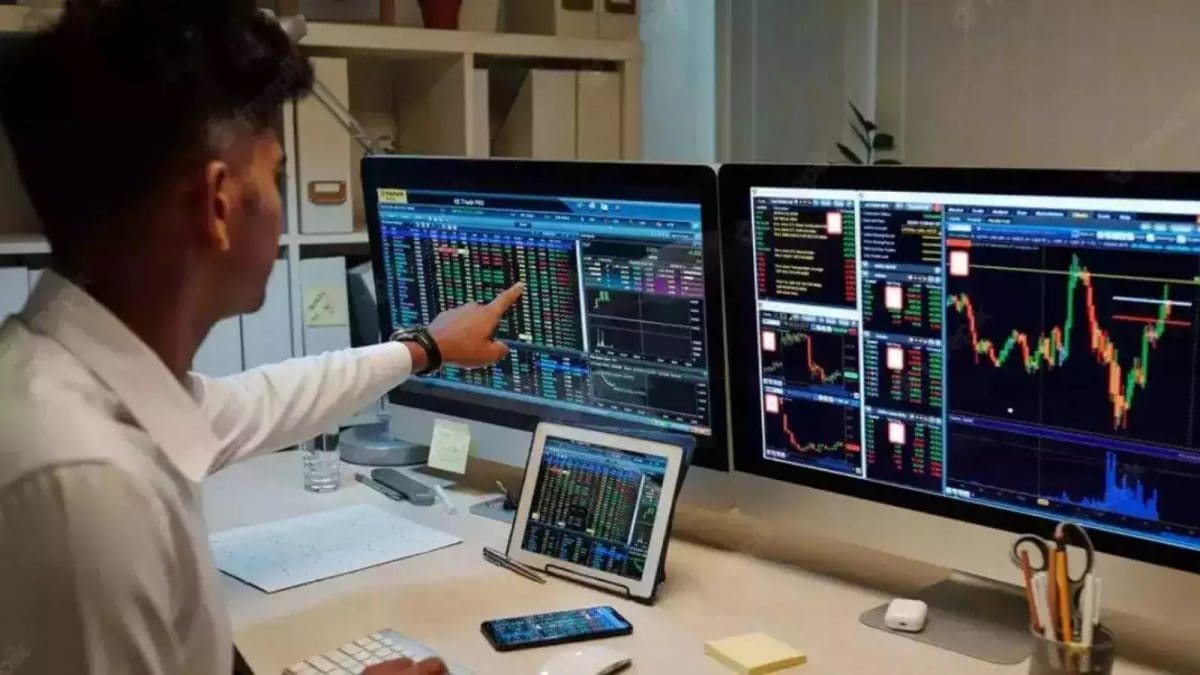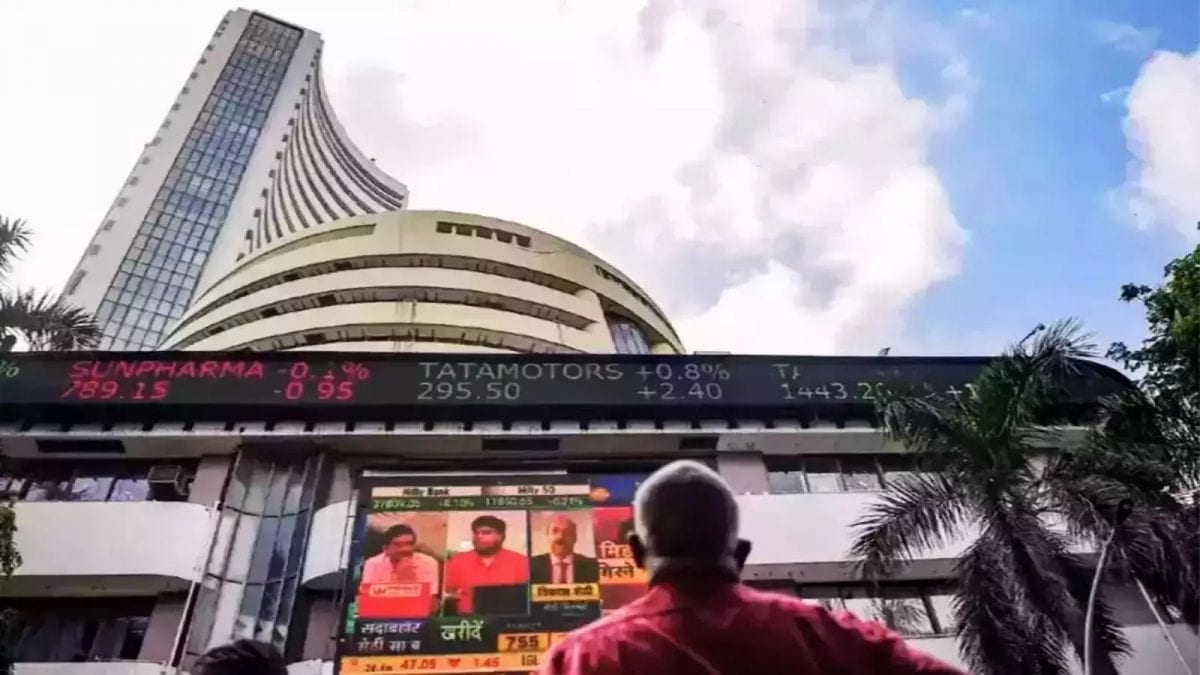Business
Trump’s tariffs have failed US? Govt revenues go up while consumers struggle; here’s what former IMF deputy MD says – The Times of India

US President Donald Trump’s ‘Liberation Day’ tariffs have brought limited tariffs for the United States even after six months of introduction, former IMF deputy managing director Gita Gopinath said.In a post on X, the she explained that while the tariffs have significantly boosted government revenue, the gains have come largely at the expense of domestic firms and households hitting American businesses and consumers.“Raise revenue for the government? Yes. Quite substantially. Borne almost entirely by US firms and passed on some to US consumers,” she noted.Gopinath also warned that the tariffs have contributed to higher prices, burdening households, pointing out that costs have risen in several everyday consumer items. “Raise inflation? Yes, by small amounts overall. More substantially for household appliances, furniture, coffee,” she said.She further added that there are still no signs of improvement in the US trade balance or manufacturing sector, two areas the tariffs were intended to support. Summing up, Gopinath called the overall “score card…negative,” indicating that the policy has failed to meet its broader economic goals while adding inflationary pressures.Donald Trump had imposed massive tariffs on many countries citing trade imbalance and announcing them as a part of efforts to boost American manufacturing and support US workers.The US imposed an additional tariff of 25% on Indian imports to the country on top of an already existing 25% tariff, taking the total amount to 50%.On 26 September, he further announced plans to impose a 100 per cent tariff on branded and patented pharmaceutical products from October 1, 2025, unless the manufacturers set up production facilities in the US, according to ANIMeanwhile, a World Bank report predicts that India will continue to be the world’s fastest-growing major economy. The growth expected to be supported by strong domestic consumption, improved agricultural output and rising rural wages, according to the World Bank’s latest South Asia Development Update.
Business
New Labour Reforms Will Transform Workers’ Lives: NFITU

New Delhi: Dr. Deepak Kumar Jaiswal, National Convenor of CONSENT and National President of the National Front of Indian Trade Unions (NFITU), on Saturday welcomed the Prime Minister Narendra Modi government’s new labour codes, calling them a landmark step toward ensuring dignity, safety and fair wages for India’s workforce.
Speaking to IANS, he said the reforms reflect Prime Minister Narendra Modi’s commitment to strengthening worker justice and modernising India’s labour ecosystem in line with global standards. Dr. Jaiswal praised the provision of time-bound minimum wages, describing it as a historic initiative that will directly curb exploitation and bring long-overdue stability to labourers.
“The recent discussions with Union Minister Mansukh Mandaviya further reinforced the government’s intention to deliver reforms that genuinely benefit workers,” Dr. Jaiswal mentioned. He added that the new laws will bring visible improvements to the lives of millions of labourers.
Highlighting the focus on women in the workforce, Dr. Jaiswal applauded the rules ensuring equal pay and eliminating gender discrimination, as well as provisions for safer workplaces. He said women constitute half of the population and are increasingly part of the labour force, and the government has addressed their concerns with seriousness and sensitivity.
He also lauded the decision to extend social security coverage to more than 40 crore workers, calling it a major step that demonstrates the Prime Minister’s commitment to providing protection and respect to every Indian worker.
With 14 major organisations associated with NFITU, he said extensive consultations took place before the reforms were finalised, ensuring that workers’ voices were adequately represented. On the introduction of double wages for overtime and free health check-ups for workers above 40 years of age, Dr. Jaiswal said these measures clearly show that the Modi government places the dignity and quality of life of workers at the forefront.
Drawing a comparison with global labour systems, he said India’s laws are now moving on par with international standards. He added that while some unions in the past resorted to frequent strikes, the broader objective should always be constructive dialogue and appreciation when the government does the right thing.
Dr. Jaiswal remarked that earlier governments, including during the tenure of former Prime Minister Manmohan Singh, had not implemented such reforms despite repeated demands. He emphasised that NFITU is not politically aligned, but as a responsible trade union body, it would continue to raise its voice against any shortcomings and also acknowledge positive steps taken in the interest of workers.
Business
Why is this Budget so important for the UK economy?

Next week, the Chancellor will reveal the Government’s latest set of tax and spending policies as she also outlines her ambitions for the economy under the Labour Government.
The state of the economy is the key focal point ahead of the Budget, amid criticism from industry over the impact of the Government’s first Budget last year.
The state’s official forecaster will also lay out its key projections over how the economy is set to fare over the coming years, with fears that it could present a gloomy outlook in the short term.
Here the PA news agency looks at the importance of this Budget for the economy:
– What is the backdrop of the Budget?
The UK economy started the year with positive growth, with GDP (gross domestic product) rising by around 0.7% over the first quarter of the year.
Nevertheless, this had been boosted by stronger trade ahead of expected tariffs and came amid an increasingly uncertain global economic backdrop.
This growth has steadily slowed down as the year progressed, with the Office for National Statistics (ONS) reporting growth of 0.3% in the second quarter and 0.1% in the third quarter of the year.
The dip has come amid declines in the production sector as well as slower growth in the services sector.
Meanwhile, inflation has been elevated over the past year, striking a peak of 3.8% in July, August and September.
It dipped slightly last month – although at a slower rate than expected – but also comes amid a backdrop of falling wage growth.
Consumer finances had been supported by stronger wages but real wage growth has slowed significantly in recent months because of pressure in the labour market.
Unemployment has also lifted, striking a four-year-high of 5% in the three months to September.
– Why is the last budget important?
Weak hiring, slowing wage growth and price inflation have all been partly linked to policies which came into force following the Labour Government’s first budget last year.
The budget led to higher taxes and labour costs for many businesses when the policies came into force in April this year.
Firms were affected by the increase in the national minimum wage, higher National Insurance Contributions (NICs), reduced business rates discounts and other taxes, such as a new packaging tax.
The Bank of England highlighted that the increase in NICs and the minimum wage partly contributed to higher food price inflation earlier this year as impacted firms passed some of this on to their customers.
– What is the view of businesses ahead of the Budget?
Businesses and trade bodies have stressed that they came under pressure from the previous budget and have urged the Government to avoid hitting them with further increases.
Industry data has also shown that some business spending has been held back ahead of the Budget, with firms cautious about their financial position.
The latest monthly flash PMI economic data – which shows activity in the UK’s private sector – showed that activity was dented by cautious decision making from firms before the Budget.
– What is the view of consumers?
Consumer spending has also been broadly cautious in recent months, with Bank of England policymakers recently highlighting a focus on saving in favour of spending.
On Friday, the ONS said retail sales contracted in October for the first time in three months as shoppers also held off before the Budget.
Economists have cautioned that predicted rises in personal taxes at the Budget come mean that some consumers will reduce their spending plans rather than just delay them until nearer to Christmas.
Ruth Gregory at Capital Economics said: “The risk is that the fourth quarter isn’t a golden one for retailers and that higher taxes in the Budget restrain retail spending over the crucial festive period and going into next year.”
– Why has there been focus on the Government’s ‘fiscal hole’ and what does this mean?
The so-called “fiscal hole” is the gap between the Government’s projected spending and its projected revenues, typically through taxes or borrowing.
This is particularly important for the Government as it seeks to meet the fiscal rule that it must balance spending and revenues over the next five years.
Economists have predicted that a significant “fiscal hole” has grown since the last spending review, with spending reductions lower than expected because of failures to pass welfare cuts, increased borrowing costs and expected readjustment to productivity forecasts.
Nevertheless, reports have suggested that original predictions of a roughly £30 billion fiscal hole have now been reduced, with the Financial Times indicating the OBR think this will be nearer to £20 billion.
Last week, reports indicated the Government would therefore not push forward with expected increases to income tax as they did not need to raise as much money in order to plug this black hole.
On Wednesday, the Office for Budget Responsibility will reveal how much money new spending reductions or tax increases will generate in order to address this.
It will also unveil its latest forecasts for key economic metrics such as economic growth, unemployment and inflation.
– Will the Budget be important for the financial markets?
The Budget can impact trading in the financial markets, as has significant speculation about potential policy decisions.
Typically, the value of the pound and the price of gilts – government bonds – are the most likely to be influenced by budget policy.
Gilt yields, which rise as prices fall, ticked higher earlier this week but are still significantly lower than earlier this year as borrowing costs have drifted lower amid lower interest rates.
Both the pound and gilt prices tend to reach positively to cautious spending commitments and limited tax changes, particularly if they believe tax policy is likely to hamper economic growth or wider investment.
The FTSE 100 and other domestic equity indexes do not tend to be directly impacted by changes in domestic policy, although they can be influenced by fluctuations in the pound.
Stocks in specific sectors which are targeted by policy could however move in value.
For example, listed gambling companies have seen speculation of increased levies on sports betting press down on their share value.
Business
Rail fares to be frozen for first time in 30 years

Rail fares are to be frozen for the first time in 30 years, the Government has announced.
Ministers said the move will save millions of rail travellers hundreds of pounds off season tickets, peak and off-peak returns between major cities.
Commuters on the more expensive routes will save more than £300 a year.
The Government said the changes are part of its plans to rebuild a publicly owned Great British Railways that will deliver value for money through bringing rail tickets into the 21st century with tap in tap out and digital ticketing, alongside investing in superfast wifi.
The announcement applies to England and services run by English train operating companies.
Chancellor Rachel Reeves said: “Next week at the Budget I’ll set out the fair choices to deliver on the country’s priorities to cut NHS waiting lists, cut national debt and cut the cost of living.
“That’s why we’re choosing to freeze rail fares for the first time in 30 years, which will ease the pressure on household finances and make travelling to work, school or to visit friends and family that bit easier.”
Transport Secretary Heidi Alexander said: “We all want to see cheaper rail travel, so we’re freezing fares to help millions of passengers save money.
“Commuters on more expensive routes will save more than £300 per year, meaning they keep more of their hard-earned cash.
“This is part of our wider plans to rebuild Great British Railways the public can be proud of and rely on.”
Ministers said a typical commuter travelling to work three days a week using flexi-season tickets will save £315 a year travelling from Milton Keynes to London, £173 travelling from Woking to London and £57 from Bradford to Leeds.
The freeze will apply to all regulated fares, including seasons, peak returns for commuters and off-peak returns between major cities, benefitting more than a billion passenger journeys said the Government.
The move was warmly welcomed by rail unions and passenger groups.
Mick Whelan, general secretary of the train drivers union Aslef, said: “We are pleased that after 14 years of the Tories pricing people off our railways, this Labour Government is helping people to commute to work and travel for pleasure.
“This is the right decision, at the right time, to help passengers be able to afford to make that journey they need to take, and to help grow our railway in this country, because the railway is Britain’s green alternative – taking cars and lorries off our congested roads and moving people and goods safely around our country in an environmentally-friendly way.”
Alex Robertson, chief executive of passenger watchdog Transport Focus said: “Freezing fares will be extremely welcome news for rail passengers who consistently tell us value for money is their highest priority, alongside trains running on time. It should also make it more attractive for people to use the train more often or for the first time.
“We’ve always recognised there is a difficult balance to strike in how the railway is funded between fares and public subsidy. That makes today’s announcement particularly welcome.”
Eddie Dempsey, general secretary of the Rail, Maritime and Transport union, said: “This freeze is a welcome first step towards better value fares for passengers and shows that Government plans for public ownership of the railways can deliver real tangible benefits for passengers.
“More affordable fares will encourage greater use of public transport, supporting jobs, giving a shot in the arm to local economies and helping to improve the environment.
“As more passengers return to the railway, it is worth remembering that a well-staffed network with ticket office workers on hand to help people find the best and most affordable tickets, is the best way forward for the rail industry.”
TUC general secretary Paul Nowak said: “The disastrous privatisation experiment left regular train travel unaffordable and unreliable for far too many, but this Government is turning the page on the failed era of privatisation by delivering publicly-owned railways which put passengers above profit.
“This rail fare freeze will be a huge relief to working people who have got used to paying through the nose for a shabby service.”
A Rail Delivery Group spokesperson said: “The Government’s decision to freeze fares is good news for customers. Use of the railway continues to grow year on year, helping people travel to work and connect with family, while supporting a more sustainable future. We want our railways to thrive, that’s why we’re committed to working with Government to ensure upcoming railway reforms deliver real benefits for customers.”
The Conservatives welcomed the freeze but said the Government was “late to the platform”.
Shadow transport secretary Richard Holden said: “In Government, the Conservatives kept fares on the right track with below-inflation rises and consistently called for no further hikes to protect hard-working commuters.”
-

 Tech1 week ago
Tech1 week agoNew carbon capture method uses water and pressure to remove CO₂ from emissions at half current costs
-

 Business1 week ago
Business1 week agoThese 9 Common Money Mistakes Are Eating Your Income
-

 Tech1 week ago
Tech1 week ago$25 Off Exclusive Blue Apron Coupon for November 2025
-

 Fashion1 week ago
Fashion1 week agoAfter London, Leeds and Newcastle, next stop Glasgow for busy Omnes
-

 Sports1 week ago
Sports1 week agoTexas A&M officer scolds South Carolina wide receiver after touchdown; department speaks out
-

 Sports1 week ago
Sports1 week agoApple scrapping MLS Season Pass service in ’26
-

 Business1 week ago
Business1 week agoWhat’s behind Rachel Reeves’s hokey cokey on income tax rises?
-

 Tech5 days ago
Tech5 days agoTwo-step flash Joule heating method recovers lithium‑ion battery materials quickly and cleanly











